Lijiang is a town that is a complete contrast to anywhere else we have been in China. Set among the rolling hills of north Yunnan province, it has a backdrop that reminds us we have escaped the huge sprawling, heavily populated cities we have visited so far. We are staying in the old town which has an old world charm and is very pretty and picturesque. It is sufficiently far off the beaten track to be almost free of Chinese tourists but, in exchange, there are more westerners here. They are drawn by the simple beauty of the place and by the chance to experience the stupendous views of Tiger Leaping Gorge (reputedly the best trek in China).
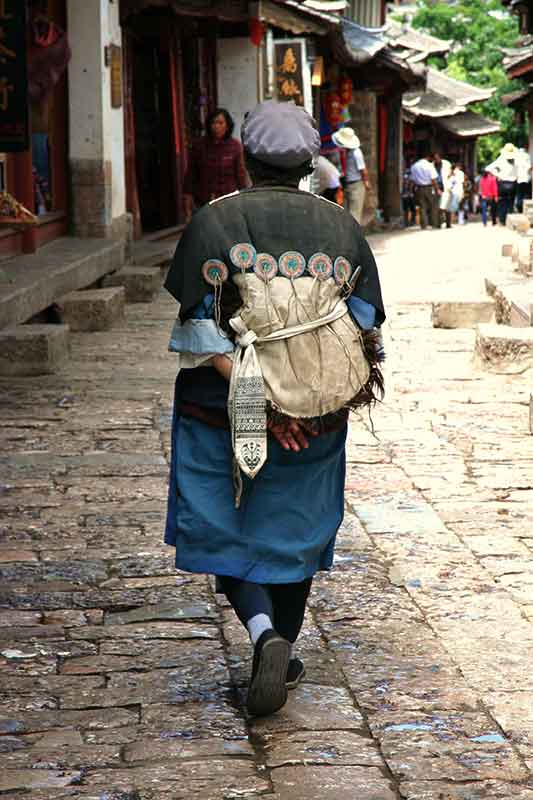 The old town is a maze of narrow, vehicle-free cobbled streets, rickety (or rickety-looking, given gentrification) wooden buildings that stand beside gushing streams spanned by little stone bridges. Little willow trees line some of the paths along the banks and bright flowers lend a cheerfulness to the old austerity of the houses. At night, red lanterns light the way while caged songbirds serenade the diners and children place floating candles in the streams for good luck.
The old town is a maze of narrow, vehicle-free cobbled streets, rickety (or rickety-looking, given gentrification) wooden buildings that stand beside gushing streams spanned by little stone bridges. Little willow trees line some of the paths along the banks and bright flowers lend a cheerfulness to the old austerity of the houses. At night, red lanterns light the way while caged songbirds serenade the diners and children place floating candles in the streams for good luck.
Certainly, if a waterside location engenders good fortune, then the old town has it in spades. It is dissected by a web of artery-like streams that once brought the town’s drinking water from a spring in the wonderfully named Black Dragon Pool to the north of town. The pool, in turn, is dominated by the black slopes and snow capped peaks of Jade Dragon Snow Mountain that rise over 5,000 metres in a foreboding two tone contrast to green forests below.
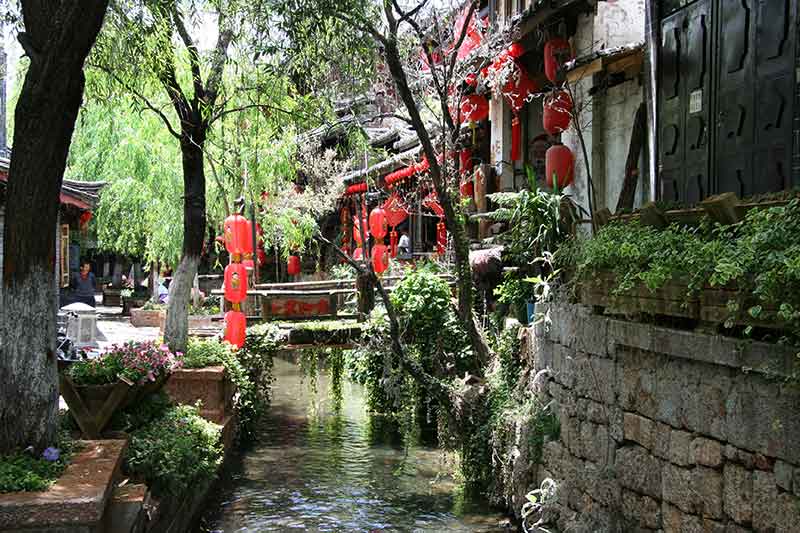 I thought the place was fantastic. It was not crowded, it was not smoggy and we couldn’t get killed crossing the street. But it was a bit touristy nonetheless. The old town square, once the haunt of Naxi traders, is now full of restaurants, travel shops, knick knack stalls, tea shops and bars of all kinds. At night most have live music, not of any traditional genre, but of guitar playing, amplified Chinese songs set to western music. Modernisation cannot be kept at bay.
I thought the place was fantastic. It was not crowded, it was not smoggy and we couldn’t get killed crossing the street. But it was a bit touristy nonetheless. The old town square, once the haunt of Naxi traders, is now full of restaurants, travel shops, knick knack stalls, tea shops and bars of all kinds. At night most have live music, not of any traditional genre, but of guitar playing, amplified Chinese songs set to western music. Modernisation cannot be kept at bay.
And its modernisation that threatens the magnificent Tiger Leaping Gorge. A plan for eight dams along the upper reaches of the Yangzi River had the gorge squarely in its sights. It would flood more than 13,000 hectares (33,000 acres) of farmland, dislodge over 100,000 people and drown unique local architecture, plant and animal life. Apparently, the plan is on hold currently but, given the demand for electricity and the need to alleviate water shortages from the province’s main city, Kumning), I would not be surprised to see it happen.
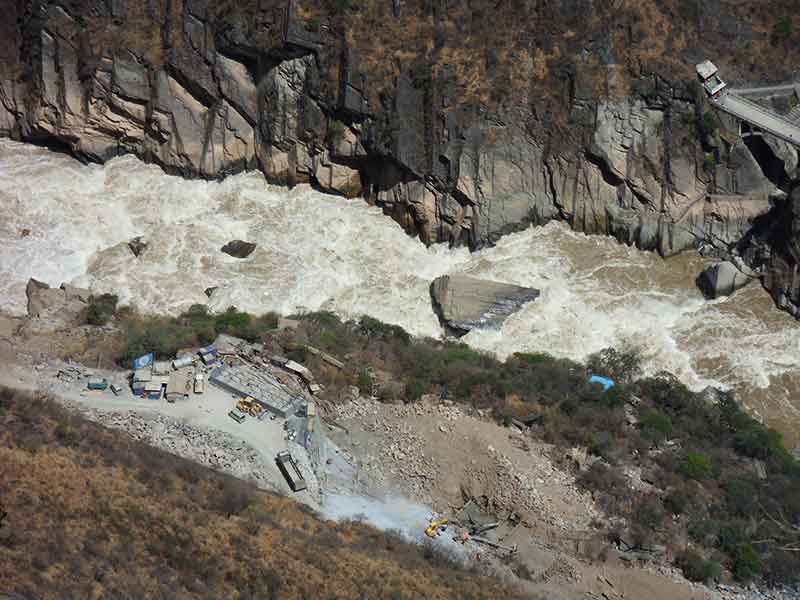 It’s not as if the authorities hold dear the magnificent beauty of the pass. Having, blasted away much of the mountainside to build a road through the gorge in the 1990s, they are now replacing that road with a new one. Herculean blasting shatters the peace and drowns out the sound of the river splashing over rapids. Great explosions from the depths of the gorge, as if emanating from Hades itself, send grey clouds rising into the air, filling the narrow valley with choking granite cloud. One way or another, the powers that be have it in for this beautiful paradise.
It’s not as if the authorities hold dear the magnificent beauty of the pass. Having, blasted away much of the mountainside to build a road through the gorge in the 1990s, they are now replacing that road with a new one. Herculean blasting shatters the peace and drowns out the sound of the river splashing over rapids. Great explosions from the depths of the gorge, as if emanating from Hades itself, send grey clouds rising into the air, filling the narrow valley with choking granite cloud. One way or another, the powers that be have it in for this beautiful paradise.
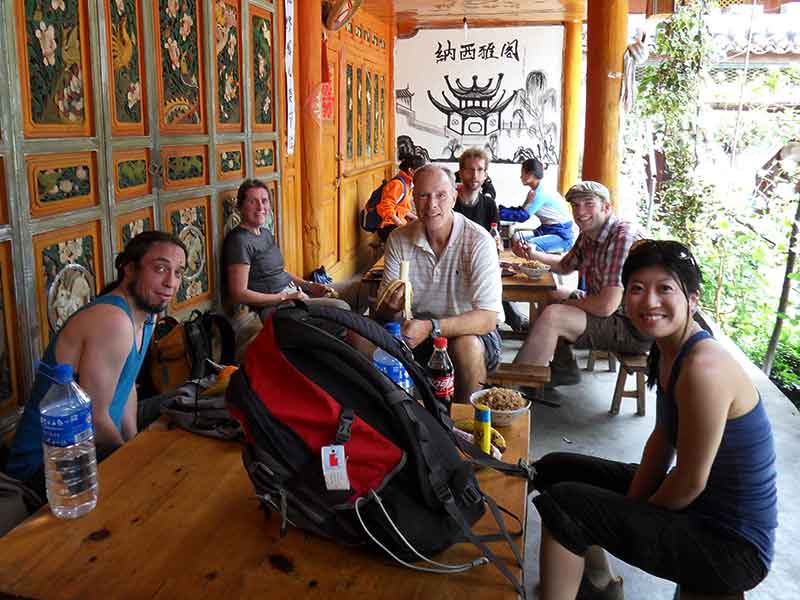 The start of the walk is a 3-hour ride from town and we had the good company of three others from our hostel. We picked up a sixth member of our party during a coffee break before setting off to complete an eclectic mixture of westerners. The trail is very poorly marked and criss crossed by numerous others, confusing the route and tricking us into dead ends. Unlike the mountain paths in South America, it’s not possible simply to follow the donkey droppings but, from time to time, helpful locals point out the correct route. The trail is swept with scree and rises up to 2,850 metres fairly quickly with one section, known as 28 bends, drawing us upwards in a lung busting short distance. The temperature made it sweaty going but the heat rising up from the ground was the worst enemy, filling our bodies with air hotter than we were expelling. Fortunately, we didn’t have any racers in our group so we could take the ascent at a steady pace and, after two hour of climbing we reached the top of the path.
The start of the walk is a 3-hour ride from town and we had the good company of three others from our hostel. We picked up a sixth member of our party during a coffee break before setting off to complete an eclectic mixture of westerners. The trail is very poorly marked and criss crossed by numerous others, confusing the route and tricking us into dead ends. Unlike the mountain paths in South America, it’s not possible simply to follow the donkey droppings but, from time to time, helpful locals point out the correct route. The trail is swept with scree and rises up to 2,850 metres fairly quickly with one section, known as 28 bends, drawing us upwards in a lung busting short distance. The temperature made it sweaty going but the heat rising up from the ground was the worst enemy, filling our bodies with air hotter than we were expelling. Fortunately, we didn’t have any racers in our group so we could take the ascent at a steady pace and, after two hour of climbing we reached the top of the path.
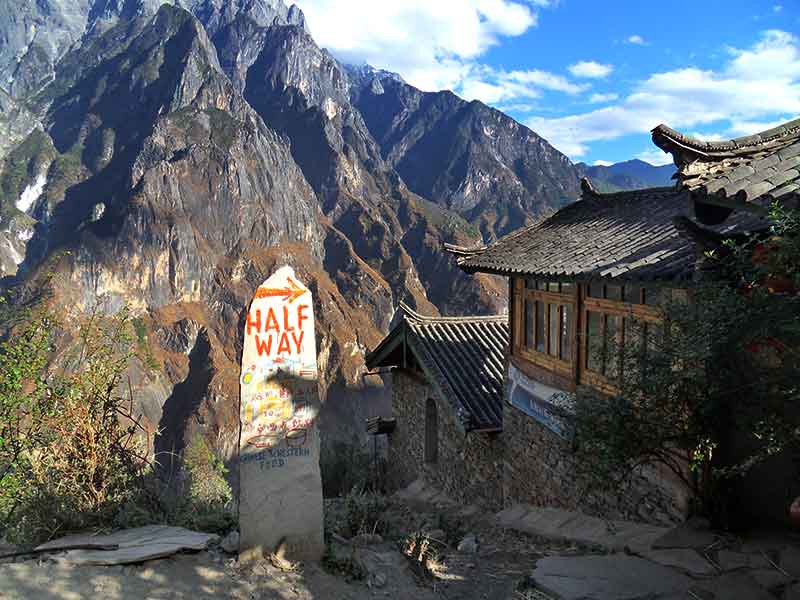 Thereafter, it was easy going for the rest of the day enabling us to appreciate the fabulous views of the snowy mountains on the other side of the gorge. The afternoon sunshine fought a never ending battle against the cloud to capture the series of jagged summits of Haba Shan some two thousand metres above us. The sound of river as it sped over rapids was amplified by the rocky walls of the gorge and water sprouted from the mountainside. It was an exhilarating walk. To the south of us stretched the river, sparkling in the sunshine, and winding away into distant mountains. To the north, the river flowed out of the gorge and into a plain decorated with a tapestry of farmland. It’s easy to fall off the edge of the narrow mountain pathway because we cannot take our eyes off the view.
Thereafter, it was easy going for the rest of the day enabling us to appreciate the fabulous views of the snowy mountains on the other side of the gorge. The afternoon sunshine fought a never ending battle against the cloud to capture the series of jagged summits of Haba Shan some two thousand metres above us. The sound of river as it sped over rapids was amplified by the rocky walls of the gorge and water sprouted from the mountainside. It was an exhilarating walk. To the south of us stretched the river, sparkling in the sunshine, and winding away into distant mountains. To the north, the river flowed out of the gorge and into a plain decorated with a tapestry of farmland. It’s easy to fall off the edge of the narrow mountain pathway because we cannot take our eyes off the view.
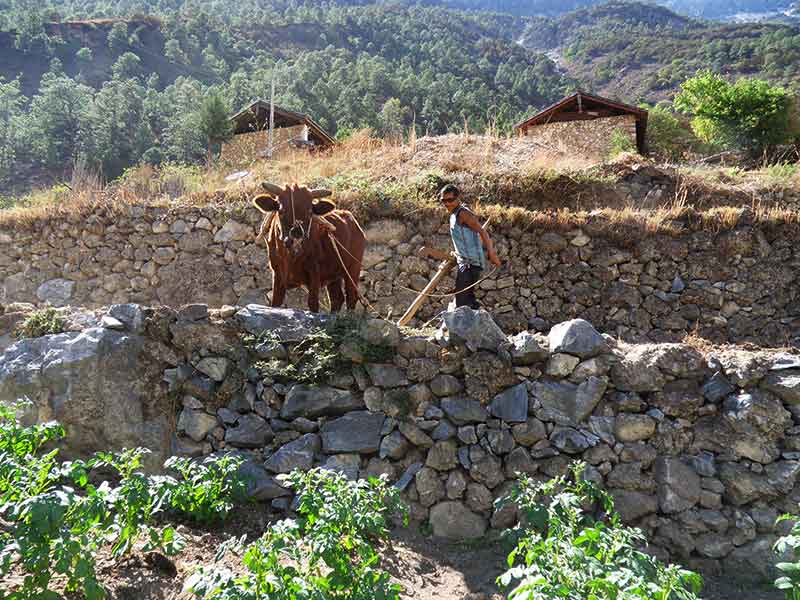 It’s a busy, narrow trail shared not just by trekkers but also with many farmers hauling produce and shepherds pushing goats to new pastures. There are plenty of resthouses carved into the hillside in little villages of 20 or 30 people where exhausted walkers can stop for food and drink. We called it a day at 6.00pm and stayed in a lovely little inn for the night where they had clean sheets, hot water and pleasant food. We took a beer or two on their ‘inspiration terrace’ overlooking the great mountain opposite, watching the shadows creep towards the summit as the sun retired for the day and listening to the explosions of the road construction below. The plan was to catch a bus back to the start of the walk and then another back to Lijiang but it was hard to imagine that would be possible after the blasting below us. Over dinner we worked out plans A through to F for the next day, dependent upon what conditions we would encounter when we descended to the finish of the trail.
It’s a busy, narrow trail shared not just by trekkers but also with many farmers hauling produce and shepherds pushing goats to new pastures. There are plenty of resthouses carved into the hillside in little villages of 20 or 30 people where exhausted walkers can stop for food and drink. We called it a day at 6.00pm and stayed in a lovely little inn for the night where they had clean sheets, hot water and pleasant food. We took a beer or two on their ‘inspiration terrace’ overlooking the great mountain opposite, watching the shadows creep towards the summit as the sun retired for the day and listening to the explosions of the road construction below. The plan was to catch a bus back to the start of the walk and then another back to Lijiang but it was hard to imagine that would be possible after the blasting below us. Over dinner we worked out plans A through to F for the next day, dependent upon what conditions we would encounter when we descended to the finish of the trail.
The descent, the next morning, was harder than I expected thanks to sore knees and dehydration from the previous day (I had only drunk 3 litres of liquid, beer not counting!), but there were some spectacular waterfalls along the way, one of which almost covered the path. It seemed to fall from heaven in a stream of white pearls, alternatively tumbling over the edge of rock and clinging to the rockface before breaking onto liquid fragment on the trail. Had it rained overnight, an early morning shower would have been unavoidable.
Down at the bottom, we were told that the road was open for an hour, fortunately a bus was leaving almost immediately and we jumped aboard when advised that the next opportunity would not arise until 6.00 in the evening. The 20 Km back along the gorge took an hour as the bus bumped over the surface and weaved between great chunks of dead rock. On several occasions we had to wait for large machinery to move aside so that we could continue. But we made it back to Lijiang without much delay.
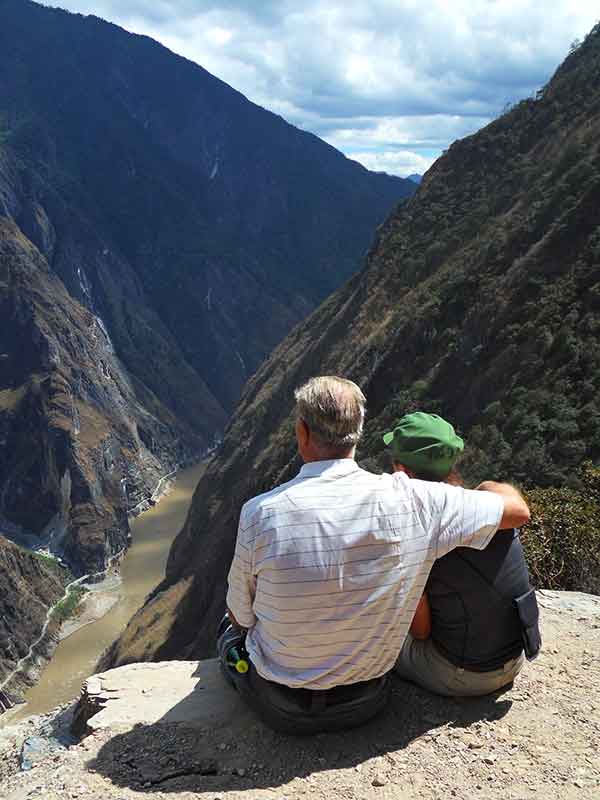 Tiger Leaping Gorge is a wondrous, beautiful place to trek and to enjoy some of China’s most spectacular terrain. We hope that they don’t spoil it, flood it or close it. We hope the Chinese can appreciate its beauty and its majesty and learn to appreciate the positive contribution that foreigners can bring to the area.
Tiger Leaping Gorge is a wondrous, beautiful place to trek and to enjoy some of China’s most spectacular terrain. We hope that they don’t spoil it, flood it or close it. We hope the Chinese can appreciate its beauty and its majesty and learn to appreciate the positive contribution that foreigners can bring to the area.

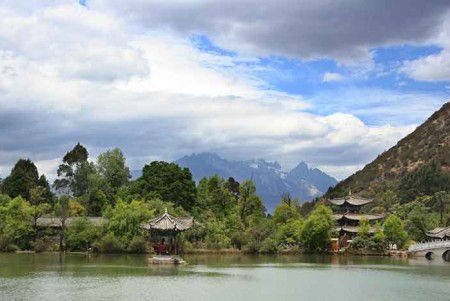
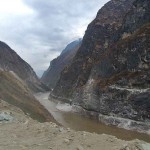
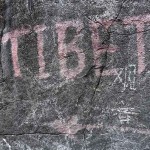

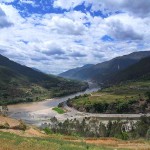
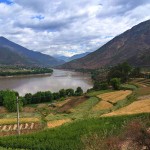
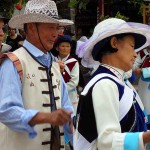
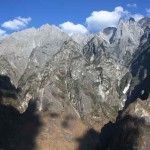
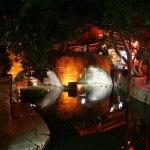
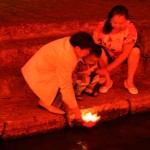


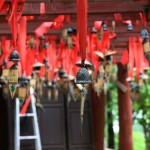

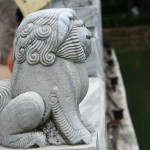

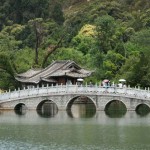
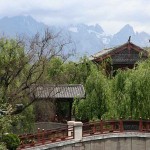

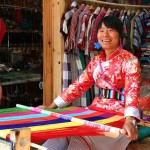

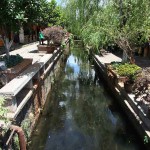

No comments yet.